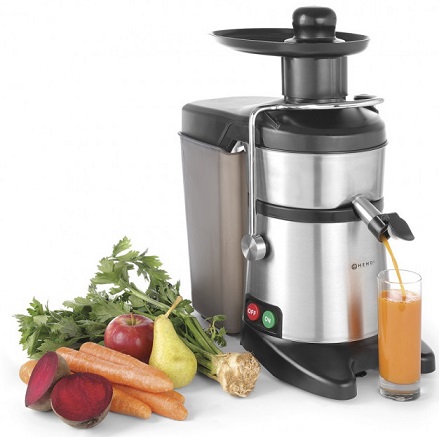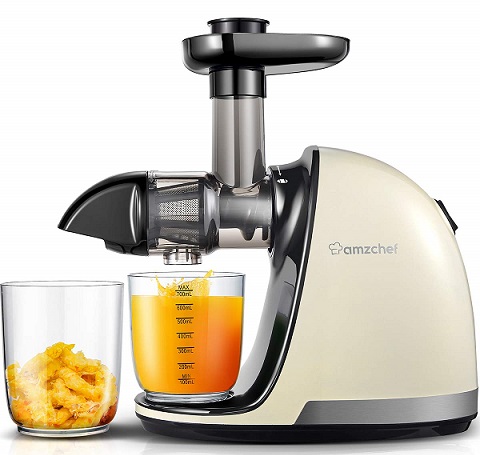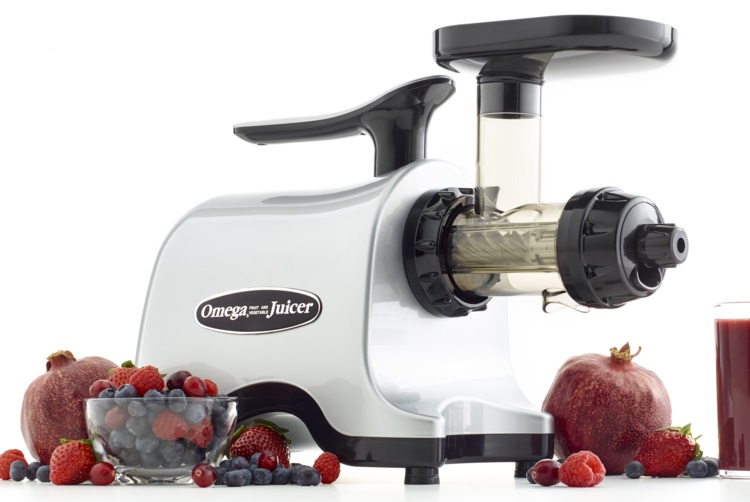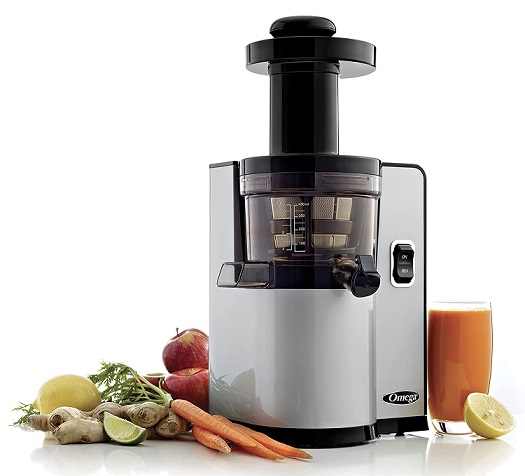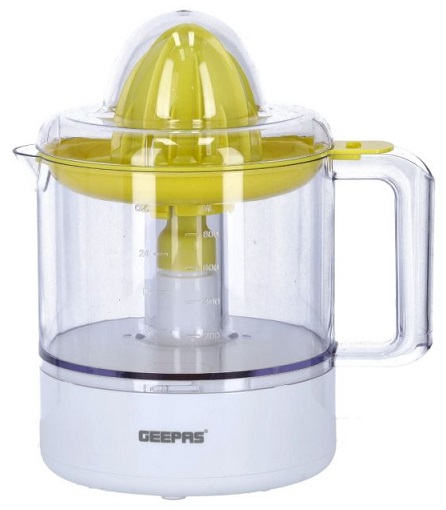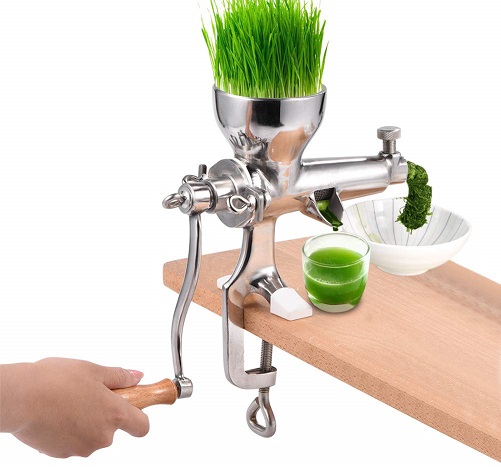Juice is one of the best ways to add more nutrients into your health regimen.
However, if you are worried about the preparation work and patience involved for juicing, then fret no more – investing in right juicing equipment is the best solution.
With a dozen varieties available in the market, choosing the best juicer that matches your juicing needs can be confusing.
We are here with this article to help you with the easy decision-making process. We provide you with a list of different types of juicers, their features, and the pros and cons.
Types of juicers
There are eight different types of juicers available with various specifications. They are:
- Centrifugal Force Juicer
- Masticating Juicer
- Triturating or Twin Gear Juicer
- Juice Press or Hydraulic Press
- Manual Juicer
- Pulp Ejection Juicer
- Citrus Juicers
- Wheatgrass Juicer
Let us explore each type in detail and learn its pros and cons.
1. Centrifugal Force Juicer
This is the most popular type of juicer found in most homes. Also known as the fast juicer, this is the most cost-effective juicer. It is less expensive than the other types.
How Does a Centrifugal Juicer Work?
Centrifuge juicers are the fastest type of equipment and are best for hard and thick fruits and vegetables. They operate at a very high speed, i.e., at 6,000 to 14,000 RPM. Do you want to have fresh apple or carrot juice for you or your family? A centrifugal juicing machine is all you need. Get the most from your fruits and vegetables using this wonderful device.
A centrifugal juicer comes with a feeding tube through which you can add the items to the machine. The best part is that you don’t have to cut your fruits and vegetables but feed them as they are through the tube. As a result, you can save a lot of your time on the preparation. Additionally, they are very quick and help you get fresh juice in no time. However, they tend to produce a lot of foam when preparing juice. Some might not find it appealing and feel that it causes the oxidation of juices.
Ease Of Use
The centrifugal juicing machines are easy to use, clean, and maintain, too.
Price
Coming to the price, they are very affordable and cost less than the other slow juicers.
Noise
The only disadvantage of using this type of juicer is that they tend to make a loud noise when operating.
Taste
Juices made using a centrifugal machine taste less fresh when compared to other slow juicers.
Ideal For
This juicing machine is best suitable for people with a budget constraint. It is ideal for those who do not press fruits and vegetables for juice in large batches. Also, people who prefer immediate juice consumption and want to have a glass of juice for nutritional benefits can go for this. This is the best option for beginners who want to spend less effort.
Pros
- It is very easy to assemble this machine, as it contains only fewer parts.
- It helps in the super quick extraction of juices from hard and thick fruits and vegetables.
- It is compact in design and occupies less space in your kitchen.
- It is easy to use, clean, and maintain.
- It is cost-effective and very affordable than the other juicers.
- It is available in different models, sizes, and colours. You can choose one from the various popular brands.
Cons
- The juice quality is comparatively less than the other slow juicers.
- These machines tend to be louder when operating.
- The juice produced from a centrifugal juicer contains a lot of foam.
- This is not a suitable option for items like leafy greens, wheatgrass, nuts, and seeds.
- Juice prepared from these machines has a short shelf life. Hence, you need to consume them immediately after preparation.
- Juices made from this juicer contain a large amount of pulp.
2. Masticating Juicer
Also called a slow juicer, a masticating juicer is a multifunctional device. You can use this machine as a food processor or a grinder, too. This juicer goes by other names like a cold-press and a single-gear.
How Does a Masticating Juicer Work?
Masticating juicers are the slowest type of equipment that operates at a very low speed, i.e., at 60 to 120 RPM. This is how it works.
This machine consists of an auger and a food chute. Whenever the food passes through the chute, the auger helps in crushing the fruits and vegetables. It further separates the pulp from the juice by using its slow squeezing operation. The machine has a mesh from where the juice passes through. The pulp gets collected in a separate container.
This is a slow-working machine as it takes time to process the items passed down through the feed tube. Moreover, you cannot add fruits and vegetables as a whole. You need to cut them to pieces before feeding them through the device. Hence, it takes more time for preparation, as well.
A masticating juicer works best for hard and soft fruits and veggies like grapes, leafy greens, etc. Because of the slow processing, the juice quality is high, the juice is fresh, thick, and has less foam. Because of their slow pace, they allow the juice to retain most nutrients and enzymes in them.
Ease Of Use
Masticating juicers are easy to use and not that easy to clean.
Price
The masticating juicers have a high upfront cost than the centrifugal juicer machines.
Noise
The masticating juicers are quieter when compared to the centrifugal machines.
Taste
The juices made from these juicers taste great, and you can store them for up to 24 hours in the refrigerator.
Ideal For
The masticating juicers are best suitable for both hard and softer fruits and vegetables. You can use them for leafy greens like spinach and also items like wheatgrass. They are rich in nutrients, and hence it is ideal for those who are willing to spend more time for the processing.
Pros
- They offer a very high juice quality when compared to centrifugal machines.
- They offer a very high juice yield when compared to centrifugal machines.
- The juices made from masticating juicers contain lesser foam than the centrifugal.
- The juices have less oxidation than those produced in the centrifugal juicers.
- You can use this device for items like wheatgrass, spinach, etc.
- The juices produced from these juicers last longer than centrifugal juicers.
- These devices are multifunctional, and you can use them as a food processor or grinder.
- You can use a masticating juicer to make nut milk, as well.
- These devices are even capable of processing frozen fruits.
Cons
- Since they have a smaller chute, you need to cut the food to pieces before feeding through the machine. This requires a lot of preparation and time.
- These devices are very expensive than centrifugal machines.
- These juicers are not easy to clean.
- These machines are slower and take more time to process the juice.
- They are heavy and bulky in size and design. They occupy more space in your kitchen.
- Juice may contain more pulp and indigestible fibre.
3. Triturating or Twin Gear Juicer
As the name suggests, these juicers have two gears that come closely assembled to each other.
How Does a Triturating Juicer Work?
The working mechanism of the triturating juicer is similar to that of masticating or single-gear machines. However, it has two augers that play a crucial role in the extraction of juice. Whenever you process the food inside the machine, the gears rotate to crush the items and grind them into tiny pieces. Then they extract the juice from these food particles and push the very dry pulp outside. As a result, the juice does not have any fibre or pulp in it.
This machine helps retain enzymes, minerals, vitamins, and antioxidants in the juice, making it rich in nutrients. It works exceptionally well for leafy greens, roots, and fruits alike. However, it is not a good option for soft watery fruits.
A triturating juicer is a multifunctional device. You can use it for other tasks like making noodles, chopping vegetables, and grinding nuts and seeds.
Ease Of Use
Triturating juicers are easy to use, and not that easy to clean.
Price
The triturating juicers have a higher price than the other juicer machines.
Noise
These juicers are quieter when compared to the centrifugal and masticating machines.
Taste
The juices made from these juicers taste great and are rich in nutrients. You can store them for up to 36 hours in the refrigerator without compromising the taste and concentration.
Ideal For
The triturating juicers are best suitable for leafy vegetables, roots, and fruits.
Pros
- They offer a very high juice quality when compared to the centrifugal and masticating machines.
- They offer a very high juice yield when compared to the centrifugal and masticating machines.
- The juices have less oxidation than those produced in the centrifugal and masticating juicers.
- You can use this device for others tasks like making nut butter, grinding coffee and spices, etc.
- Juices produced from these juicers last longer than centrifugal juicers.
- These devices operate very silently.
Cons
- These machines are very expensive than centrifugal and masticating machines.
- These devices process very slow and take more time for extracting juices.
- They are heavy and bulky and occupy more counter space in the kitchen than centrifugal juicers.
- They are difficult to clean than the single-gear machines.
4. Juice Press or Hydraulic Press
These are one of the oldest types of juicers that are nothing but great at extracting the most yield from the fruits or veggies.
How Does a Hydraulic Juicer Work?
This is how a hydraulic juicer works. It basically consists of two stages, wherein in the first stage, the food gets processed to a pulp. And then, the juice gets extracted slowly from this pulp by applying massive pressure on it. Hence rightly named, two stage-juicers.
However, you need to chop the fruits and vegetables into small chunks before adding them to the machine. You place these chunks in a cloth bag and then put them in the device. This bag acts as a mesh and separates the juice from the pulp. As a result, the juice comes out very pure and concentrated without any pulp in it. Moreover, the juice is rich in nutrients. They help in retains most nutrients, vitamins, and enzymes in the juice.
Ease Of Use
The machine is not that easy to use. Also, cleaning it is a very challenging task.
Price
Hydraulic press juicers are very expensive than other juicers.
Noise
These machines are silent when operating.
Taste
The juices produced from the hydraulic juicers are the most flavourful than any other juices. In addition, they are rich in nutrients. You can store them for about 3-5 days in the refrigerator without compromising the taste and concentration.
Ideal For
The hydraulic juicers are best suitable for leafy vegetables. It is a multifunctional device that you can use for other tasks.
Pros
- The hydraulic juicers retain most nutrients, vitamins, minerals, and enzymes in fruits and vegetables.
- The juice produced from these juicers lasts longer, i.e., from three to five days, when stored in a refrigerator.
- They offer a very high-quality juice that is rich in nutrients.
- They offer the highest juice yield even from hard-to-juice food items.
- These juices are the most flavourful of all.
- The juices have less oxidation.
- You can use this device for others tasks like making nut butter, grinding seeds, oats, etc.
- These devices operate very silently.
- You can even prepare nut oil in these machines.
Cons
- Hydraulic press juicers are very expensive than other juicers.
- These machines are not that easy to use and operate.
- Cleaning a hydraulic juicer is a very challenging and cumbersome task.
- They require using reusable or disposable bags every time for placing and collecting the pulp.
5. Manual Juicer
A manual juice extractor or a hand juicer is the one, which is mostly seen in many homes and other places. This is an excellent option if you want to save on your wallet and also your
kitchen counter space. Let us see how it works.
How Does a Manual Juicer Work?
As the name says, this is a hand-operated juicer. The user uses his force manually to extract juice from these juicers. It basically consists of a level, wherein the user rotates it to produce force when the juice gets processed. During the process, the machine extracts the juice and allows it to pass through a mesh for filtration. The pulp gets separated from the juice, and both come out from different outlets of the device.
You can extract fresh juice from oranges, grapes, etc., using this device. However, you may have to cut the fruit (orange) in half before processing them into the machine. You need to add them one by one into the juicer.
This is the oldest type of machine, which is no longer in the trend to use it. However, you can have this juicer at home or carry it with you for a picnic. It is lightweight and very compact in design.
Ease Of Use
The machine does not require any professionalism to operate. It is easy to use, manage, and easy to clean, as well.
Price
These devices are very inexpensive than the other juicer types available.
Noise
They facilitate silent operation without causing any irritation to the users.
Taste
These juices taste very fresh and flavourful. Because of the manual processing, it minimizes the oxidation and retains the nutrients from the juice.
Ideal For
A manual juicer is best suitable for those who prefer manual extraction of juice from citrus fruits like oranges, etc.
Pros
- Manual juicers are lightweight, compact in design, and portable to move.
- They minimize the oxidation in the juice and retain the nutrients from it.
- These devices are very inexpensive than the other juicer types available.
- The manual juicers operate silently.
- These are ideal for citrus fruits.
Cons
- The user may get tired when extracting juice manually in large batches.
- These machines are very slow.
- These are mostly suitable and limited for a certain type of fruit. They are not fit for extracting other types of fruits or vegetables.
- In some models, there is a problem of juice spillage when using the machine.
6. Pulp Ejection Juicer
Pulp ejection juicers are those machines that are designed to eject the pulp continuously when extracting the juice. You can find these models mostly in restaurants. Let us try to learn how it works.
How Does a Pulp Ejector Juicer Work?
We all know and use masticating juicers. But the major drawback of these machines is that you should stop it once the pulp fills the bag completely. You need to empty the pulp bag first before resuming the juicing process again. This is where a pulp ejector model comes into the picture. It is the best alternative for masticating machines and other similar models.
Here, the juicer separates the pulp from the juice and ejects it continuously while keeping the pulp bag empty. As a result, you can proceed with the juice extraction without any interruption.
Ease Of Use
The ease of use of the pulp ejection juicer makes juicing easier, quicker, and more convenient.
Price
These devices are costlier than centrifugal machines.
Noise
These devices are not loud when operating. However, the noise level can be annoying with the continuous usage of the machine for large batches.
Taste
The juice from this juicer tastes better, fresh, and flavourful.
Ideal For
This type of juicer is ideal for those who prefer a non-stop juicing process. It is best suitable for all kinds of fruits and vegetables.
Pros
- They offer a very high juice quality when compared to the centrifugal and masticating machines.
- They offer a very high juice yield when compared to the centrifugal and masticating machines.
- The juices made from these juicers contain lesser foam than the centrifugal and masticating models.
- The juices have less oxidation.
- They extract the juice and eject the pulp continuously, keeping the pulp bag empty.
- The juice from this juicer tastes better, fresh, and flavourful.
- It is the best alternative for masticating machines and other similar models.
- These machines are quicker and easier to use.
Cons
- These devices require continuous feeding of the food or items.
- These devices are very expensive than centrifugal machines.
- The noise level can be annoying when using the machine continuously for a long time.
7. Citrus Juicers
As the name suggests, these devices are exclusively for citrus fruits and extracting juice from them. These juicers are available both in manual and electric models. Let us have a look at the working mechanism of these products.
How Does a Citrus Juicer Work?
Firstly, let us learn how a manual citrus juicer works. This machine comes with a cone-shaped section on the top for feeding the fruits. You need to cut the oranges or citrus fruits into equal halves before placing them into the conical head. When you start squeezing the fruit through it, the juice extraction process starts. It consists of a strainer at the top and a cup underneath. While the pulp and seeds get collected in the strainer, the juice in the cup. There is a chance for the seeds and pulp to get mixed with the juice if the strainer has wider holes.
Coming to the electric model, it consists of a motor and a reamer. This motor helps the reamer rotate. Whenever the food gets pressed against the reamer, it gets crushed, and the juice extracts from it.
Ease Of Use
Both manual and electric citrus models are easy to use, clean, and maintain.
Price
The manual juicers are very cheaper than the electric citrus models.
Noise
They are silent when operating
Taste
The juice is fresh and tastes good.
Ideal For
A citrus juicer is specifically designed for removing the juice from only citrus fruits.
Pros
- Citrus juicers are lightweight, compact in design, and portable to move.
- They minimize the oxidation in the juice and retain the nutrients from it.
- These devices are comparatively inexpensive.
- The citrus juicers operate silently.
- These are available in different sizes and models.
- The huge models are for industrial or commercial use.
- These are ideal for citrus fruits.
Cons
- The user may get tired when extracting juice manually in large batches.
- These are mostly suitable and limited to citrus fruits only. They are not fit for extracting other types of fruits or vegetables.
8. Wheatgrass Juicers
Wheatgrass juicers are little expensive juicers because of their specified construction. Let us how they work and what they are good for.
How Does a Wheatgrass Juicer Work?
A wheatgrass juicer is almost similar to a masticating juicer and works like one. However, the juicer models having an auger are more effective than others that don’t. These models are most widely used in restaurants and cafes.
The wheatgrass juicers are available in both manual and electric models. Whenever the wheatgrass passes through the chute, the auger helps in crushing the item. It further separates the pulp from the juice by using its slow squeezing operation. The machine has a mesh from where the juice passes through. Whereas, the pulp gets collected in a separate container.
This is a slow-working machine as it takes time to process the items passed down through the feed tube. Because of the slow processing, the juice quality is high, the juice is fresh, thick, and has less foam. Because of their slow pace, they allow the juice to retain most nutrients and enzymes in them.
The electric wheatgrass juicer is a multifunctional device. You can use it for several other tasks like making frozen desserts, nut butter, baby food, etc.
Ease Of Use
Wheatgrass juicers are easy to use, and not that easy to clean.
Price
Some of these juicer models have a high upfront cost. Since the equipment comes with high- quality parts that last longer, the price is totally worth it.
Noise
The wheatgrass juicers are quieter when operating.
Taste
The juices made from these juicers taste fresh and great. Moreover, they are rich in nutrients and enzymes.
Ideal For
The wheatgrass juicers are best suitable for wheatgrass and leafy greens like spinach. You can also use them for herbs, sprouts, and similar items.
Pros
- They offer a very high juice quality.
- They offer a very high juice yield.
- The juices made from wheatgrass juicers contain lesser foam.
- The juices have less oxidation.
- You can use this device for multiple functions like making frozen desserts, nut butter, baby food, etc.
- The juices made from these juicers taste fresh and great.
- These juices are rich in nutrients and enzymes.
- They offer silent operation.
- The manual wheatgrass juicers are simple to use and portable, too.
- The electric models come with durable, high-quality parts.
Cons
- These electric devices are very expensive than manual wheatgrass machines.
- These juicers are not easy to clean.
- These machines are slower and take more time to process the juice.
- Some models require pre-cut produce, which can be time-consuming.
Conclusion
I hope this article gave you great insights into juicers and their different types. I am sure you now have a fair idea of what type to choose for your needs and preferences. Since you are aware of all that you need to know, invest in a wise option ideal for your requirement. Please let us know what would you choose and why by posting your answers in the comments.
Write to us in the comments section below if you find this article helpful and informative. Let us know if this discussion cleared all your doubts. If you need more information or have any queries, please feel free to let us know. If you have any inputs to add, do not hesitate to mention them in the comments. Your feedback is very important to us, and we would love to hear and learn from you.
Happy Juicing!
Stay home and stay safe!!

